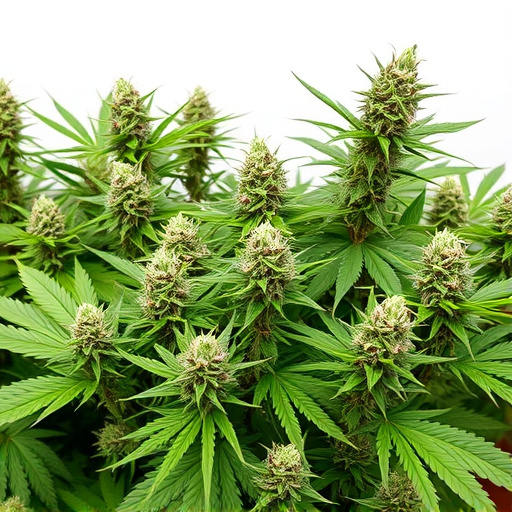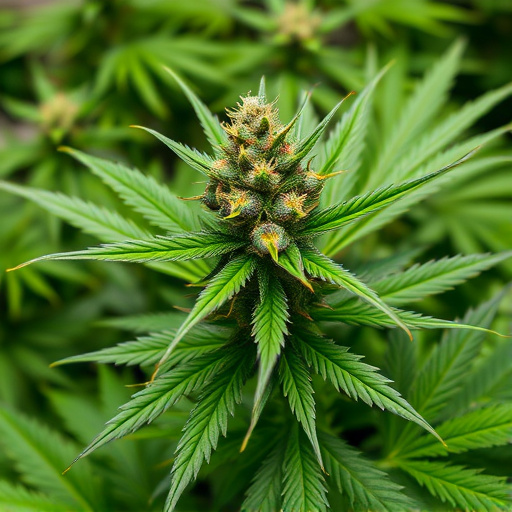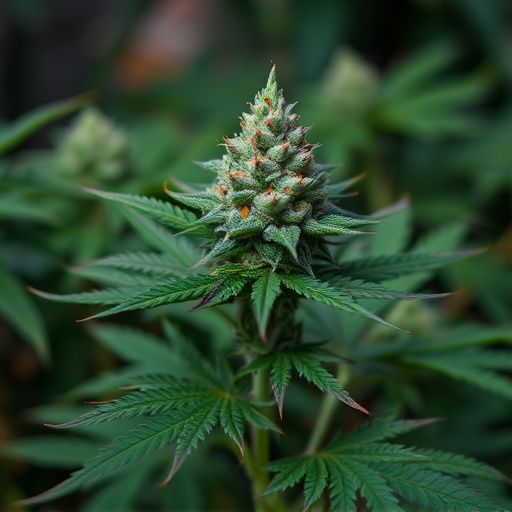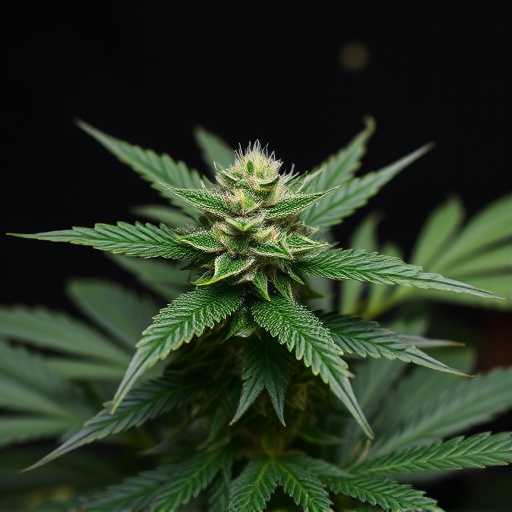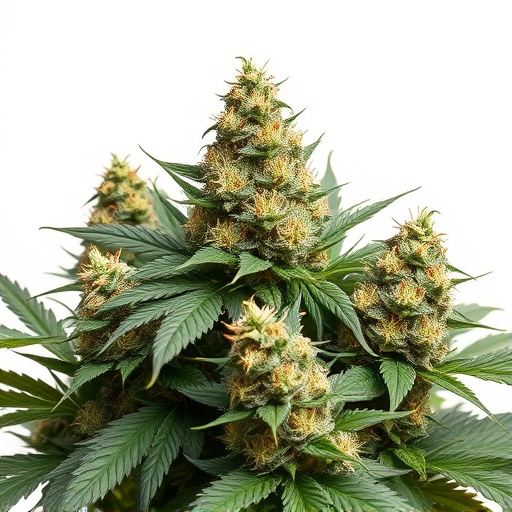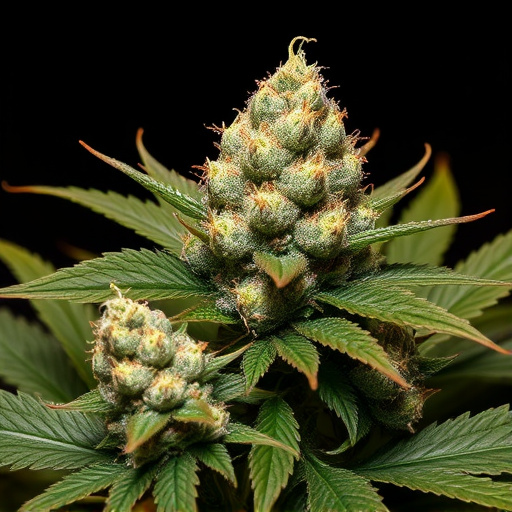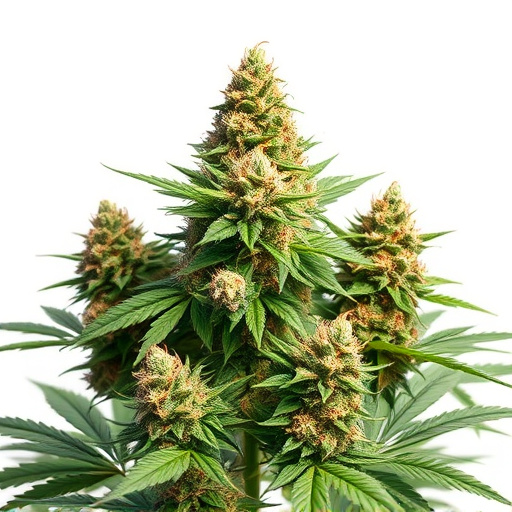Full-spectrum cannabinoids offer a holistic approach by including all natural compounds from cannabis, such as terpenes and flavonoids, beyond just THC and CBD, leveraging the Entourage Effect for enhanced therapeutic benefits. Indica dominant strains, known for their calming properties, provide relief from anxiety, pain, and sleep disorders without the overwhelming mental high of pure THC. Isolated cannabinoids offer precise dosing but overlook synergistic benefits; focusing solely on indica strains may exclude trace minerals and vitamins found in whole-plant extracts. Combining indica-dominant strains with full-spectrum oils facilitates a holistic wellness approach addressing both physical and mental health concerns.
In the realm of cannabis, understanding the distinctions between full-spectrum and isolated cannabinoids is paramount for consumers seeking optimal relief and effects. This article delves into these complexities, focusing on the enigmatic ‘entourage effect’ of full-spectrum extracts versus the potency of isolated compounds. We explore the pros and cons of pure cannabinoid isolation, particularly in the context of indica dominant strains, providing insights that help navigate this intricate landscape.
- Understanding Full-Spectrum Cannabinoids: Unlocking the Entourage Effect
- Isolated vs. Concentrated: The Pros and Cons of Pure Cannabinoid Extraction
- Indica Dominant Strains: A Case Study on Full-Spectrum vs. Isolated Cannabinoids' Effects
Understanding Full-Spectrum Cannabinoids: Unlocking the Entourage Effect
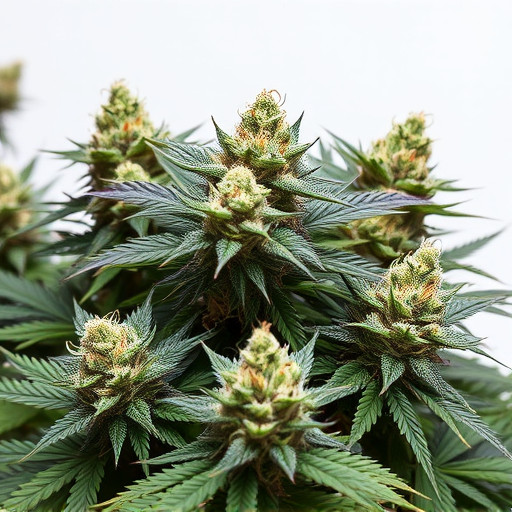
Full-spectrum cannabinoids refer to a type of cannabis product that includes all the chemical compounds found in the plant, beyond just THC and CBD. This means they capture the intricate balance of terpenes, flavonoids, and other minor cannabinoids naturally present in the herb. The concept is centered around the idea of the Entourage Effect, where these compounds work together synergistically to enhance or modify the therapeutic benefits of individual cannabinoids.
When consumed, full-spectrum products allow for a more holistic experience, mimicking what users might expect from smoking or consuming whole-plant cannabis. Indica dominant strains, known for their calming and relaxing properties, offer a prime example. The combination of multiple cannabinoids and terpenes can intensify the plant’s overall effect, providing relief from anxiety, pain, and sleep disorders while also potentially triggering feelings of euphoria—all without the overwhelming mental high associated with pure THC.
Isolated vs. Concentrated: The Pros and Cons of Pure Cannabinoid Extraction
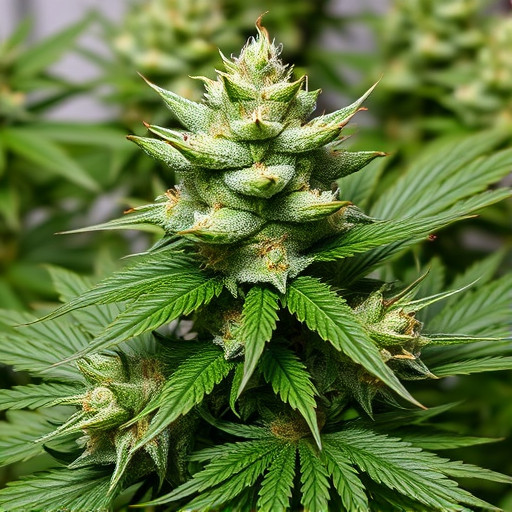
Isolated cannabinoids offer a highly purified form of specific compounds found in cannabis, such as CBD or THC. This process involves extracting and separating the desired cannabinoid from other plant materials, resulting in a product with minimal to no traces of other chemicals. The advantage lies in its precision, allowing for precise dosing and targeted effects. For instance, indica dominant strains known for their relaxing and sedative properties can be extracted to create concentrated CBD or THC products, catering to users seeking specific relief without the psychoactive effects.
However, isolation also has its drawbacks. Natural cannabis is a complex mix of cannabinoids, terpenes, and flavonoids that work together synergistically, often enhancing or modifying each other’s effects. Isolated cannabinoids miss out on this entourage effect, potentially reducing the overall therapeutic benefit. Additionally, the absence of other plant compounds may mean missing out on beneficial trace minerals and vitamins present in whole-plant extracts, especially when focusing solely on indica dominant strains for their relaxing benefits.
Indica Dominant Strains: A Case Study on Full-Spectrum vs. Isolated Cannabinoids' Effects
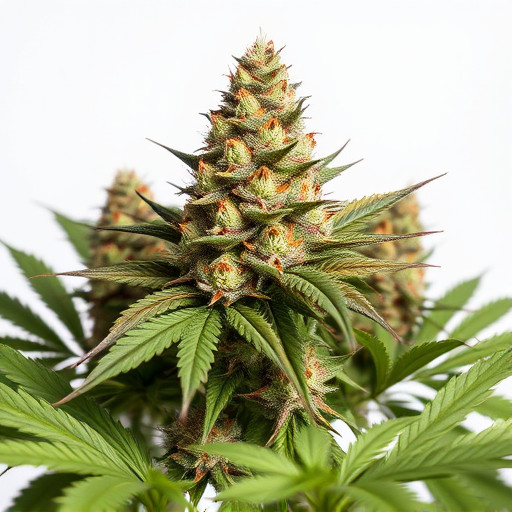
Indica-dominant strains, known for their relaxing and sedative effects, offer a unique perspective when comparing full-spectrum and isolated cannabinoids. Full-spectrum products contain all the natural compounds found in the cannabis plant, including terpenes and other minor cannabinoids. This means that users can experience the entourage effect, where the combination of these compounds enhances the therapeutic benefits. In an indica strain like Granddaddy Purple, the full-spectrum oil might provide a deeper relaxation, improved sleep quality, and reduced muscle tension, all while offering a pleasant aroma and flavor profile.
On the other hand, isolated cannabinoids are pure extracts of specific chemicals within cannabis, such as THC or CBD. While effective in targeting particular symptoms, they may not replicate the full range of effects found in full-spectrum products. For example, an isolated THC oil might deliver potent pain relief but could potentially lack the calming and sleep-promoting properties that terpenes contribute. Indica dominant strains, when consumed with full-spectrum oils, can offer a more holistic approach to wellness, addressing both physical and mental aspects of health.
In comparing full-spectrum and isolated cannabinoids, especially within the context of indica dominant strains, it’s clear that full-spectrum offers a more holistic approach to cannabis therapy, leveraging the synergistic effects known as the entourage effect. While isolated cannabinoids provide targeted relief, they may miss out on these additional beneficial interactions present in full-spectrum products. Research suggests that understanding and utilizing the complex interplay of cannabinoids and terpenes found in full-spectrum extracts could lead to more effective and balanced treatment outcomes for various conditions, particularly those associated with indica dominant strains.



